Location
The new phenology place that I chose is located in the woods behind my house in Mendon, Massachusetts. I chose this location because it is a special place that I used to always visit as a kid. During the spring and summer, a brook runs through the woods and creates a small pool at this specific location. This area is surrounded by many large rocks, dead trees, and living trees. At this time of year, the stream has dried up, so no water is flowing. Visiting this place brought back many fond childhood memories for me, and I enjoyed investigating the ecology and phenology of this location.
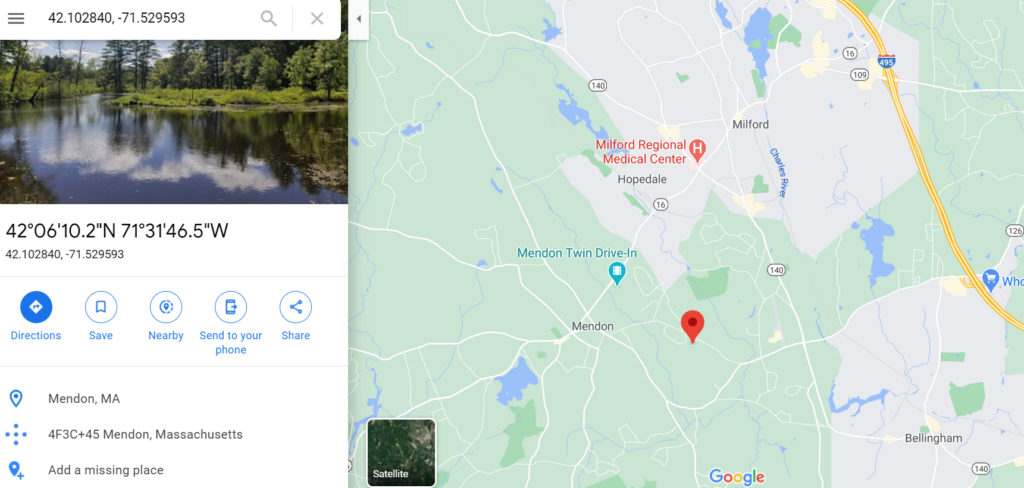
(2020). [Map showing the location of the new phenology place in Mendon, MA]. Google Maps. https://www.google.com/maps/place/42%C2%B006’10.2%22N+71%C2%B031’46.5%22W/@42.1189575,-71.5610128,12.75z/data=!4m6!3m5!1s0x0:0x0!7e2!8m2!3d42.1028402!4d-71.5295926
Comparison To Centennial Woods
When I investigated the ecology of my new place, I noticed many similarities and differences between this area and my place in Centennial Woods. First, all the deciduous trees have lost their leaves, and the ground is covered in these brown dead leaves. I noticed that most of the leaves I was seeing seemed to be Northern red oak leaves and white oak leaves. This makes sense because oak trees tend to lose their leaves later than other trees here. I also saw a few maple leaves and other types of leaves here and there. This is similar to my place in Centennial Woods because the last time I visited there, the ground was covered in dead leaves, and pretty much all of the trees had dropped their leaves already. Also, the oak trees were the last to drop their leaves in Centennial Woods, just like here in Mendon. Another similarity I noticed was that there were many Eastern white pines in this area, just like in Centennial Woods. One difference I noticed was that these pines were shorter and had a smaller diameter than the ones in Centennial Woods, leading me to believe that they are younger, or they just grow differently in these different conditions. Another similarity I noticed was that the tallest trees in this forest stand seemed to be the oak trees. While I explored this new place, I realized that there were many large rocks everywhere, which is not as much the case in my area in Centennial Woods. I witnessed a lot of primary succession occurring because there was a lot of moss growing on most of these rocks. I also noticed as I walked around that there were many fallen decomposing trees all over the ground, which is also not the case at my location in Centennial Woods.
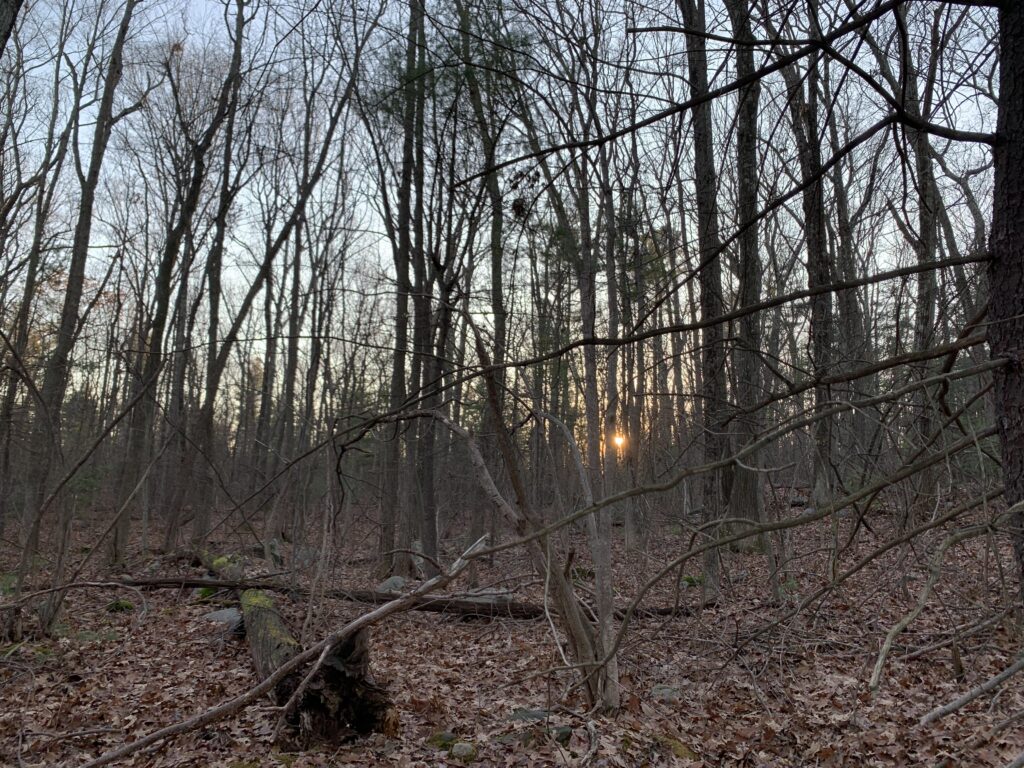
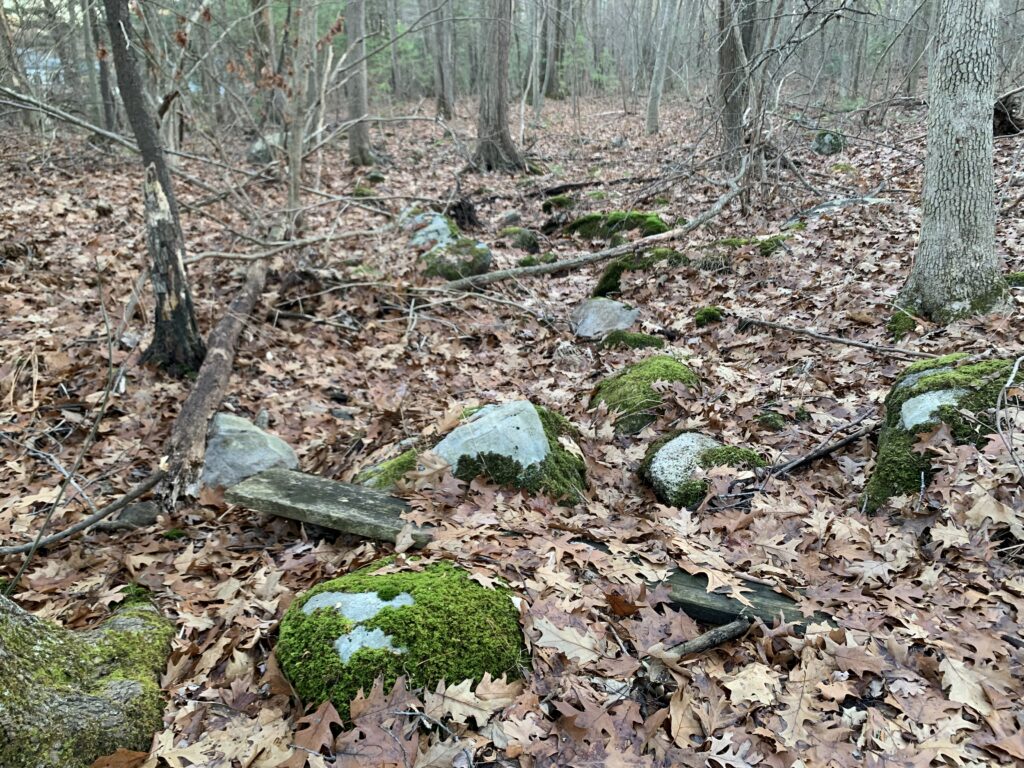

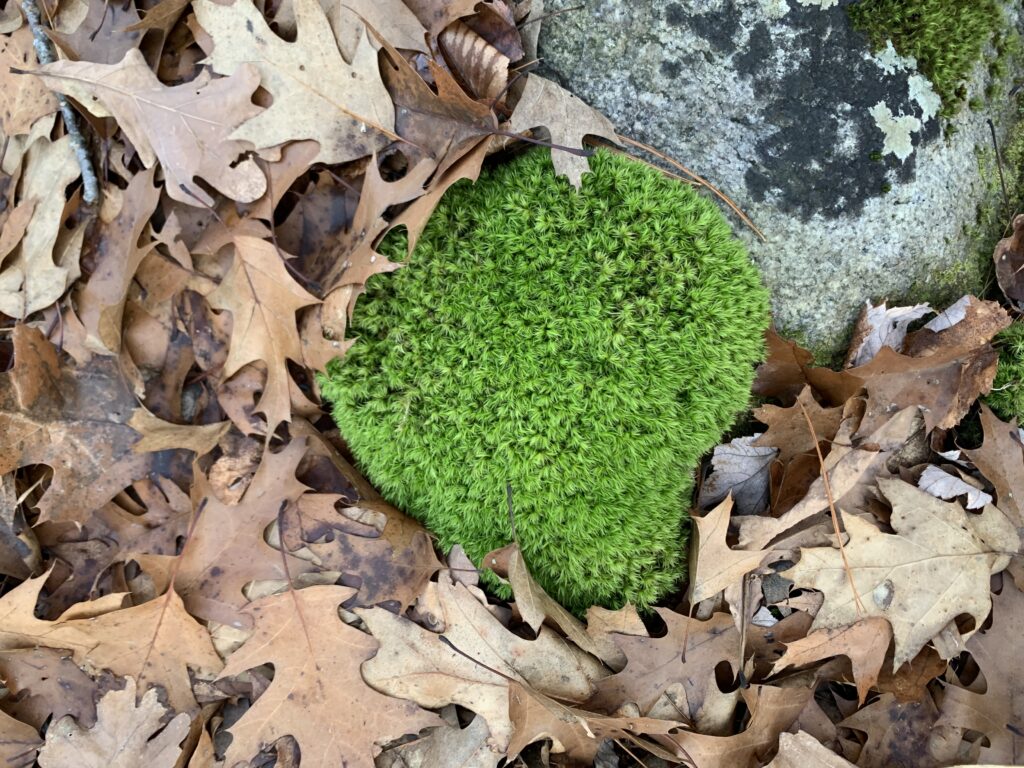

Wildlife
The first sign of wildlife that I noticed when I arrived at my location was the chirping of multiple birds high up in the trees above me. I could not spot the sources of the sounds, but I know there were multiple different species since I heard a few different chirps and squawks. I also saw several large nests tucked between branches high up in some of the trees around me that I assumed belonged to squirrels. After doing more research, I am confident that these were squirrel nests because they were large, round, “messy,” and composed mostly of leaves (Identification). Looking closely near my feet led me to find a pile of deer poop. I know there are white-tailed deer in these woods because I’ve seen them before, and I’ve gotten pictures of them on my trail camera before (as seen below). I then found more evidence of squirrels when I found a pile of acorn shells and scraps on a rock. A squirrel must have been foraging here not long before I arrived, stocking up for winter. I see gray squirrels in my yard and in my woods very often.
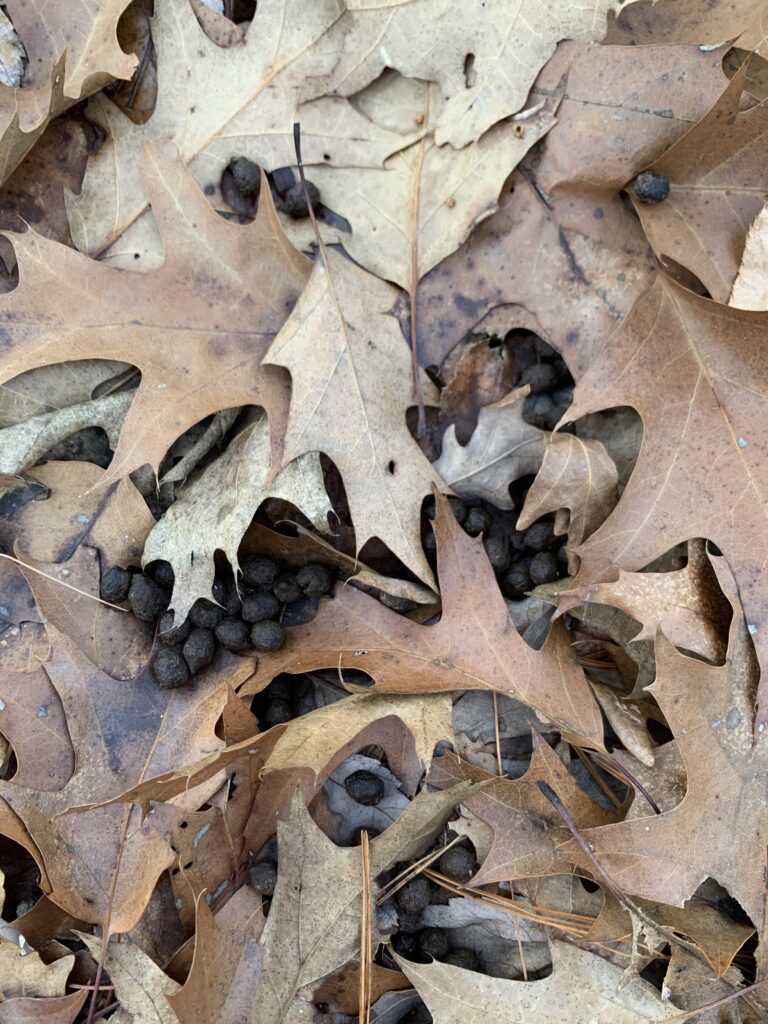
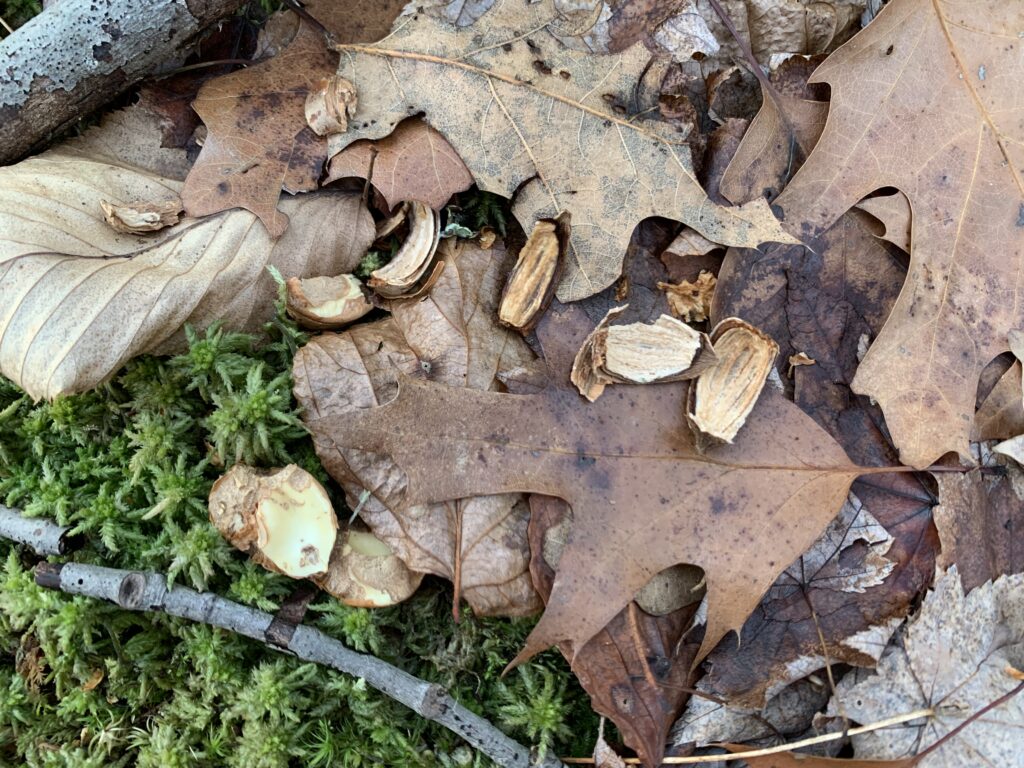
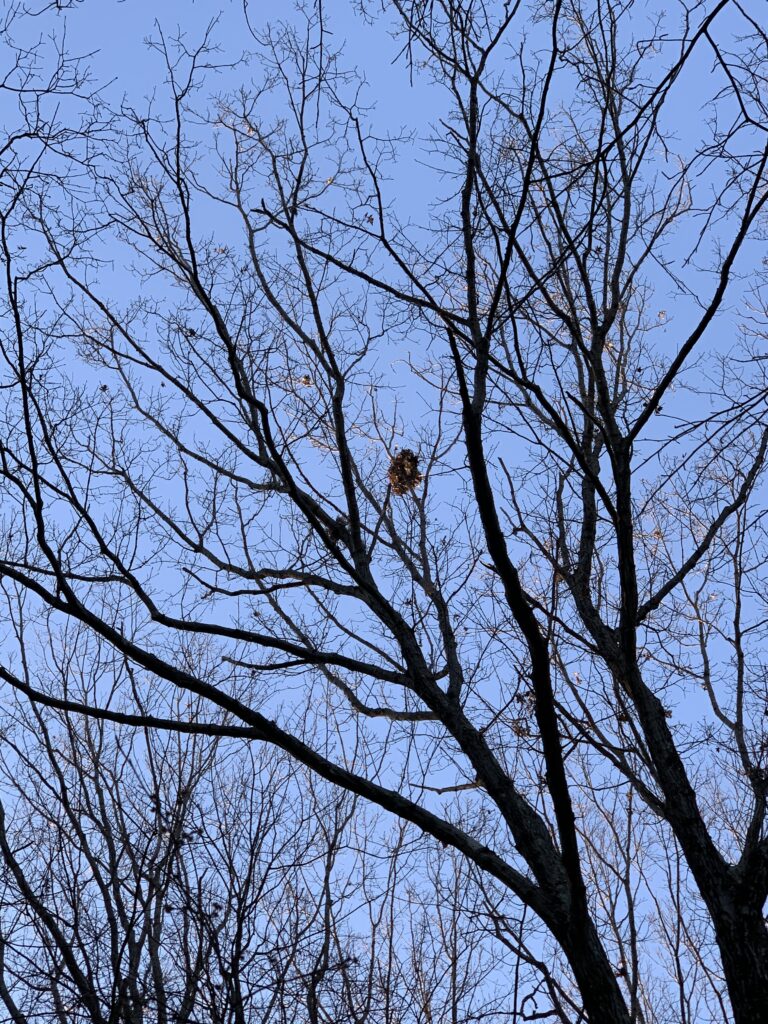

Signs of Human Use
There are many houses along the edges of this stretch of woods, so it is hard to tell whose property ends where. This means that many people have access to these woods, and there are multiple signs of human use that were obvious to me as I explored. One is the wooden board that runs across the path of the stream. When I was younger, my sister and I found this piece of wood that someone had left in the woods, and positioned it so we could use it as a little bridge to walk across the stream. Another sign of human use that I noticed was an abandoned orange dodgeball. Finally, there were some orange ribbons on a few trees, most likely marking someone’s property or placed there by hunters.
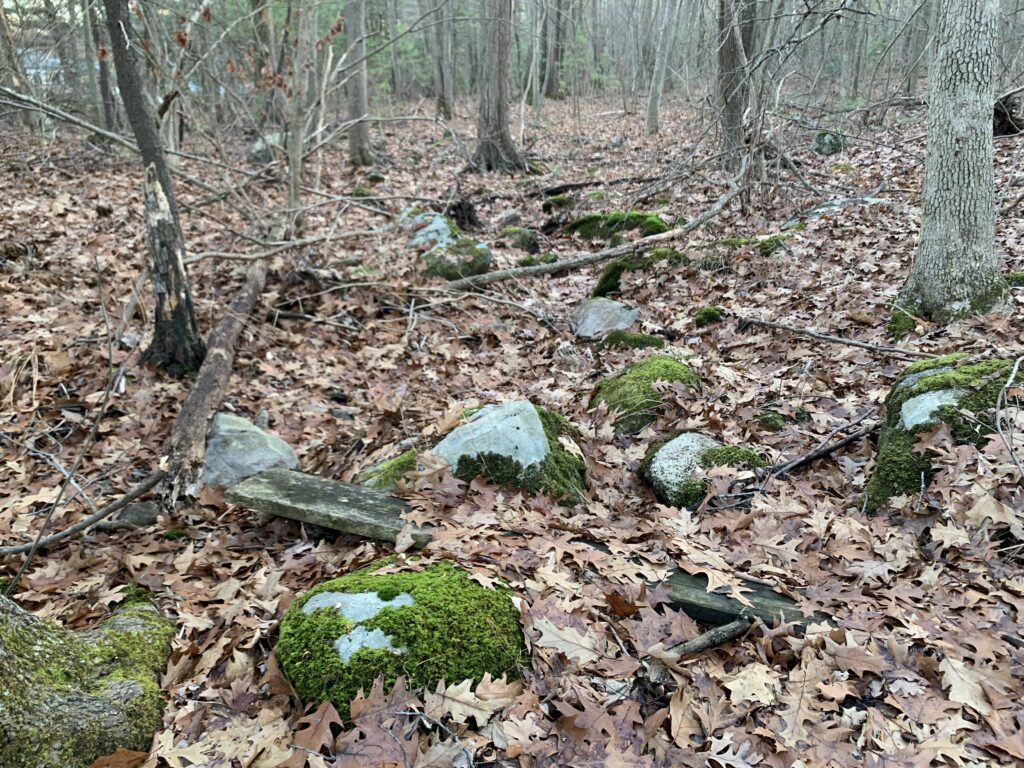
References
(2020, May 5). Identification of Large Nests. U.S. Fish and Wildlife Service. Retrieved Nov. 29, 2020, from https://www.fws.gov/midwest/eagle/Nhistory/nest_id.html#:~:text=Squirrel%20nests%20(or%20drays)%20can,and%20often%20look%20%E2%80%9Cmessy%E2%80%9D.